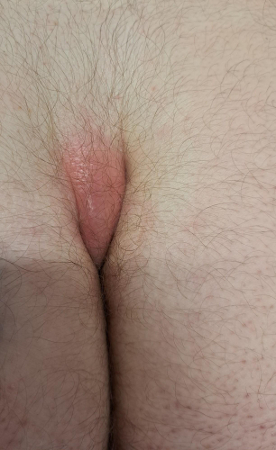Summary
Definition
ანამნეზი და გასინჯვა
ძირითადი დიაგნოსტიკური ფაქტორები
- secreção sacrococcígea
- dor e inchaço na região sacrococcígea
- tratos sinusais sacrococcígeos
სხვა დიაგნოსტიკური ფაქტორები
- presença de fatores de risco
- fatores de risco modificáveis (sentar-se por períodos prolongados, higiene perineal)
- história de ruptura prévia de fluidos para a fenda interglútea
- maceração da pele
- aumento agudo de dor e inchaço no sulco interglúteo
- febre
რისკფაქტორები
- sexo masculino
- idade entre 15 e 45 anos
- sentar-se por períodos prolongados
- hirsutismo
- frequência de banho
- sobrepeso
- história familiar de doença pilonidal
დიაგნოსტიკური კვლევები
1-ად შესაკვეთი გამოკვლევები
- diagnóstico clínico
მკურნალობის ალგორითმი
assintomático
sintomático com abscesso
doença sintomática crônica ou recorrente
კონტრიბუტორები
ავტორები
Brandon C. Chapman, MD, MS
AdventHealth
Parker Adventist Hospital & Castle Rock Adventist Hospital
CO
გაფრთხილება:
BCC declares that he has no competing interests.
მადლიერება
Dr Brandon C. Chapman would like to gratefully acknowledge Mr Iain J.D. McCallum and Dr Seamus Kelly, both previous contributors to this topic. IJDM and SK declare that they have no competing interests.
რეცენზენტები
Maher A. Abbas, MD, FACS, FASCRS
Assistant Clinical Professor of Surgery
UCLA
Chief of Colon and Rectal Surgery Chair
Center for Minimally Invasive Surgery Kaiser Permanente
Los Angeles
CA
გაფრთხილება:
MAA declares that he has no competing interests.
Angus J.M. Watson, FRCS (Ed)
Consultant Colorectal Surgeon
Clinical Manager of General Surgery and ETC
Department of Surgery
Manchester Royal Infirmary
Manchester
UK
გაფრთხილება:
AJMW is an author of a reference cited in this monograph.
რეცენზენტების განცხადებები
BMJ Best Practice-ის თემების განახლება სხვადასხვა პერიოდულობით ხდება მტკიცებულებებისა და რეკომენდაციების განვითარების შესაბამისად. ქვემოთ ჩამოთვლილმა რეცენზენტებმა თემის არსებობის მანძილზე კონტენტს ერთხელ მაინც გადახედეს.
გაფრთხილება
რეცენზენტების აფილიაციები და გაფრთხილებები მოცემულია გადახედვის მომენტისთვის.
წყაროები
ძირითადი სტატიები
Gil LA, Deans KJ, Minneci PC. Management of pilonidal disease: a review. JAMA Surg. 2023 Aug 1;158(8):875-83. აბსტრაქტი
Johnson EK, Vogel JD, Cowan ML, et al. The American Society of Colon and Rectal Surgeons' clinical practice guidelines for the management of pilonidal disease. Dis Colon Rectum. 2019 Feb;62(2):146-57.სრული ტექსტი
Segre D, Pozzo M, Perinotti R, et al. The treatment of pilonidal disease: guidelines of the Italian Society of Colorectal Surgery (SICCR). Tech Coloproctol. 2015 Oct;19(10):607-13. აბსტრაქტი
გამოყენებული სტატიები
ამ თემაში მოხსენიებული წყაროების სრული სია ხელმისაწვდომია მომხმარებლებისთვის, რომლებსაც აქვთ წვდომა BMJ Best Practice-ის ყველა ნაწილზე.

დიფერენციული დიაგნოზები
- Fístula perianal
- Abscesso perianal
- Hidradenite supurativa
მეტი დიფერენციული დიაგნოზებიგაიდლაინები
- German National Guideline on the management of pilonidal disease: update 2020
- Practice parameters for the management of pilonidal disease
მეტი გაიდლაინებიშედით სისტემაში ან გამოიწერეთ BMJ Best Practice
ამ მასალის გამოყენება ექვემდებარება ჩვენს განცხადებას